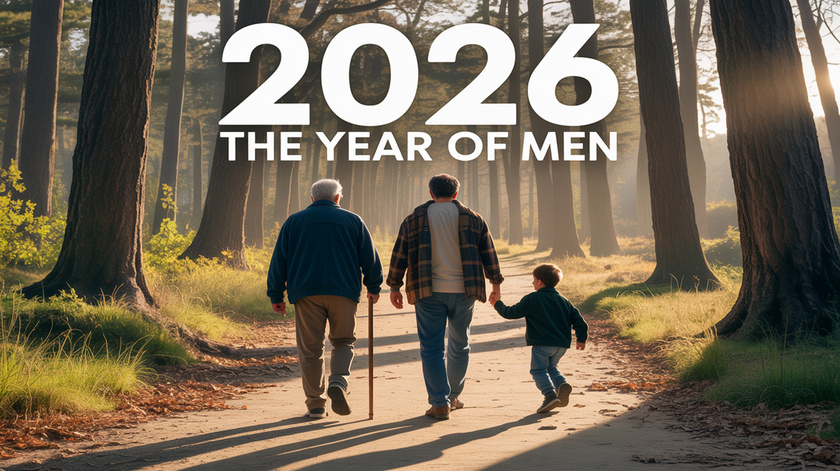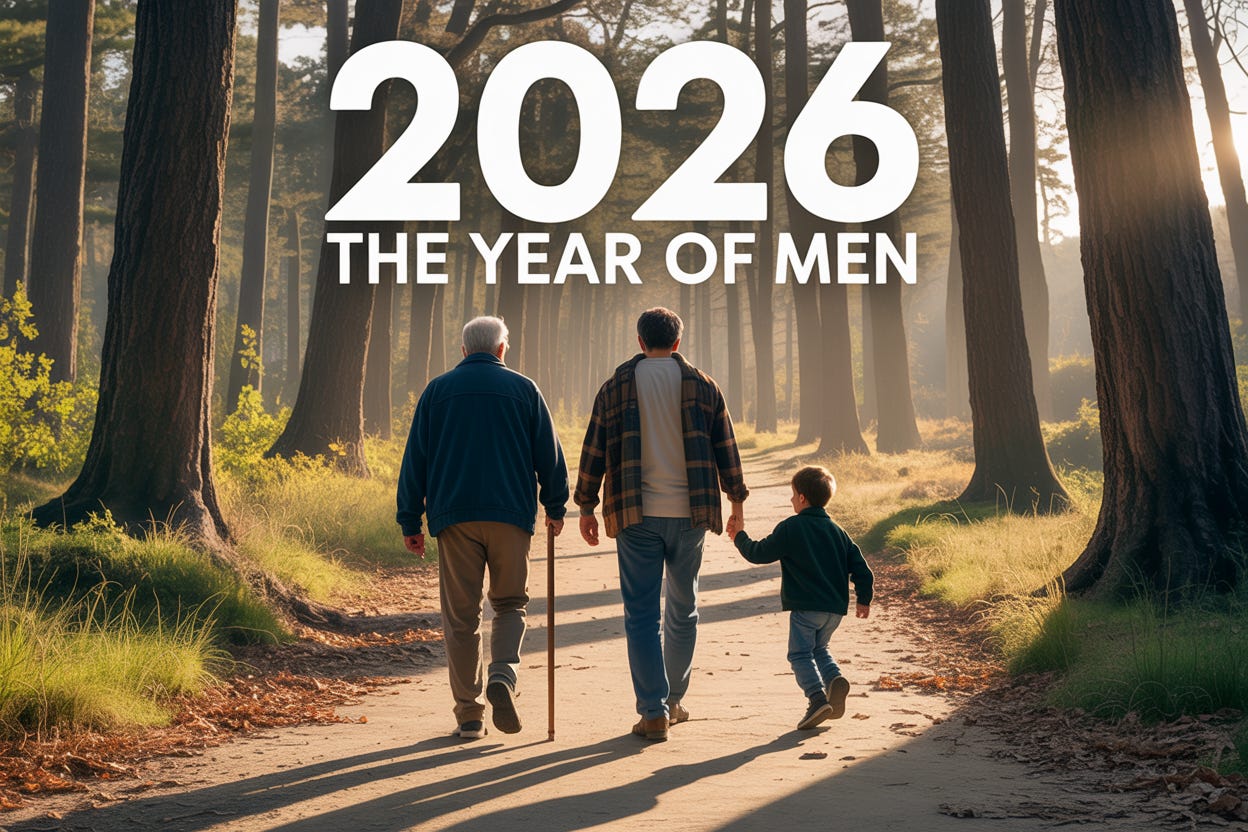Using Research to Push a Narrative
There’s a noticeable trend in research about men and women that often tells only part of the story. A prime example is domestic violence studies that falsely claim women are the sole victims, while ignoring men’s experiences. This happens in other areas too—like reproductive coercion, teen violence, healthcare, and others. Women’s troubles are spotlighted, while men’s are overlooked. Once you see this pattern, it’s hard to unsee it.
In this post, we’ll look at a study published in July of 2024, that employs a similar strategy—not by lying, but by omission. The researchers present only the part of the story that supports the narrative they want to push. And in this case, it’s clear.
___________________________
I came across a media article about boys and threats to their masculinity. From the picture below that accompanies the article, I anticipated some dramatic findings on violence or hostility.
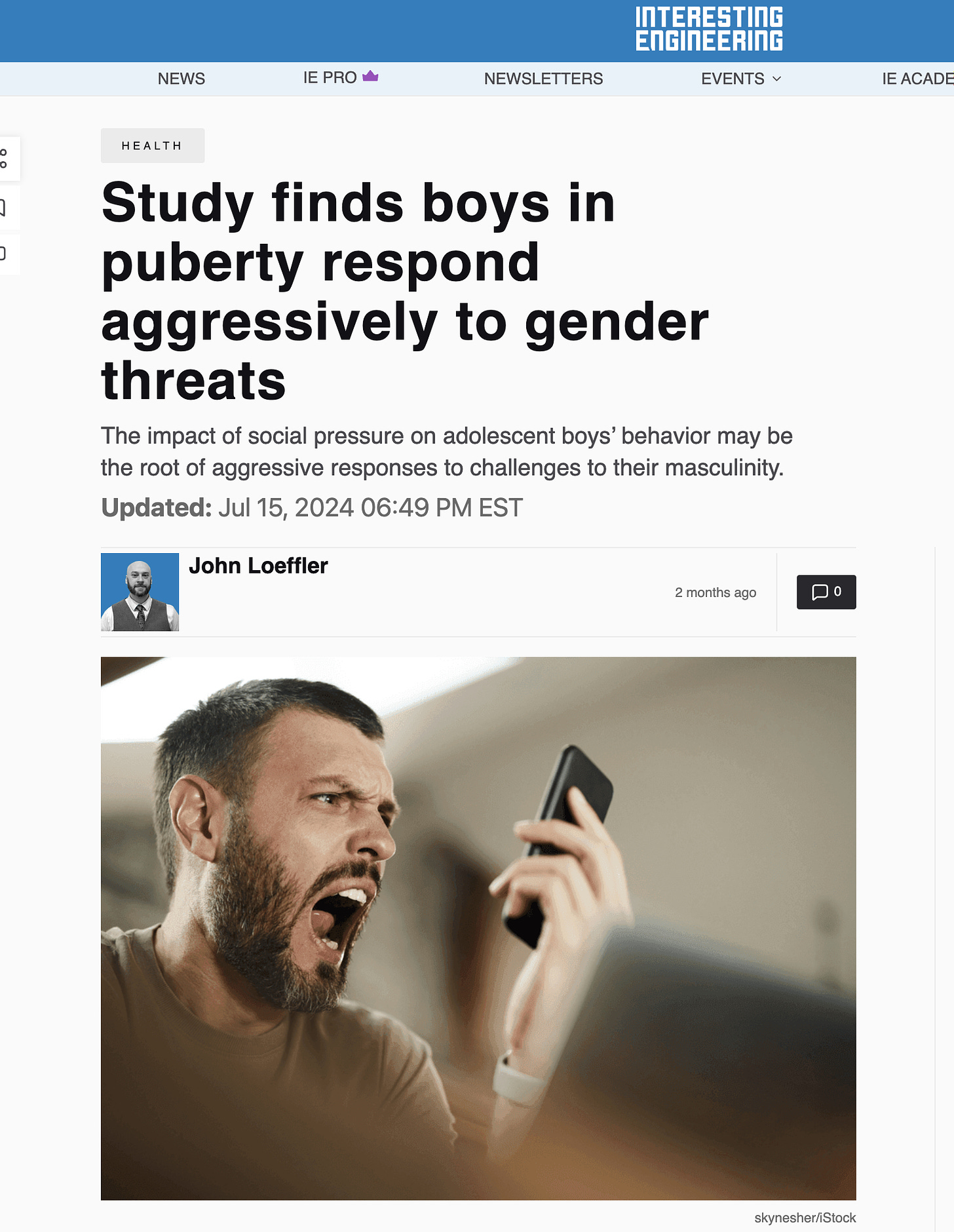
The research claimed to investigate adolescent boys' responses to threats to their masculinity. Here's a quick summary of the study:
The study was simple. 207 boys, ages 10-14, were given two quizzes—one on stereotypically feminine topics like flowers, makeup, and dresses, and one on masculine topics like tools, guns, and cars. Regardless of their actual scores, the control group was told they had scored high on the masculine test and were congratulated. The boys in the experimental group, however, were told they scored well on the feminine quiz but poorly on the masculine one. In other words, they were told they were more like the girls—meant as a threat to their masculinity. The boys then took a third quiz, a word completion test designed to measure their level of aggression. The parents took a series of questionnaires to assess their parenting.
The researchers aimed to see if this perceived threat would spark aggression. (One might also ask if the boy's aggression might be sparked simply because they were lied to. After all, they probably were well aware that they knew more about guns and cars than makeup and dresses.)
This type of response has been studied before and has been identified as "threat vigilance," a common reaction to status threats among men and boys, often linked to testosterone levels. Studies show that when a male's status is challenged, he is more likely than a female to respond aggressively, partly due to higher testosterone. However, prepubescent boys typically don't display this aggression, as they have not yet reached the higher testosterone stage of life. Curiously, despite examining what appears to be this same phenomenon, the study in question makes no mention of the previous research about threat vigilance. As we will later discover, the researcher was aware of this concept but chose not to include it in the study.
The media article I first read didn't mention threat vigilance or even mention testosterone, though it's a key factor in this type of research. Thinking I might have missed something, I searched for other articles on the study and found many—but still, no mention of testosterone in any of the articles.
What I did find were media portrayals showing angry, hostile boys, even though the researchers themselves didn’t claim the boys were violent.
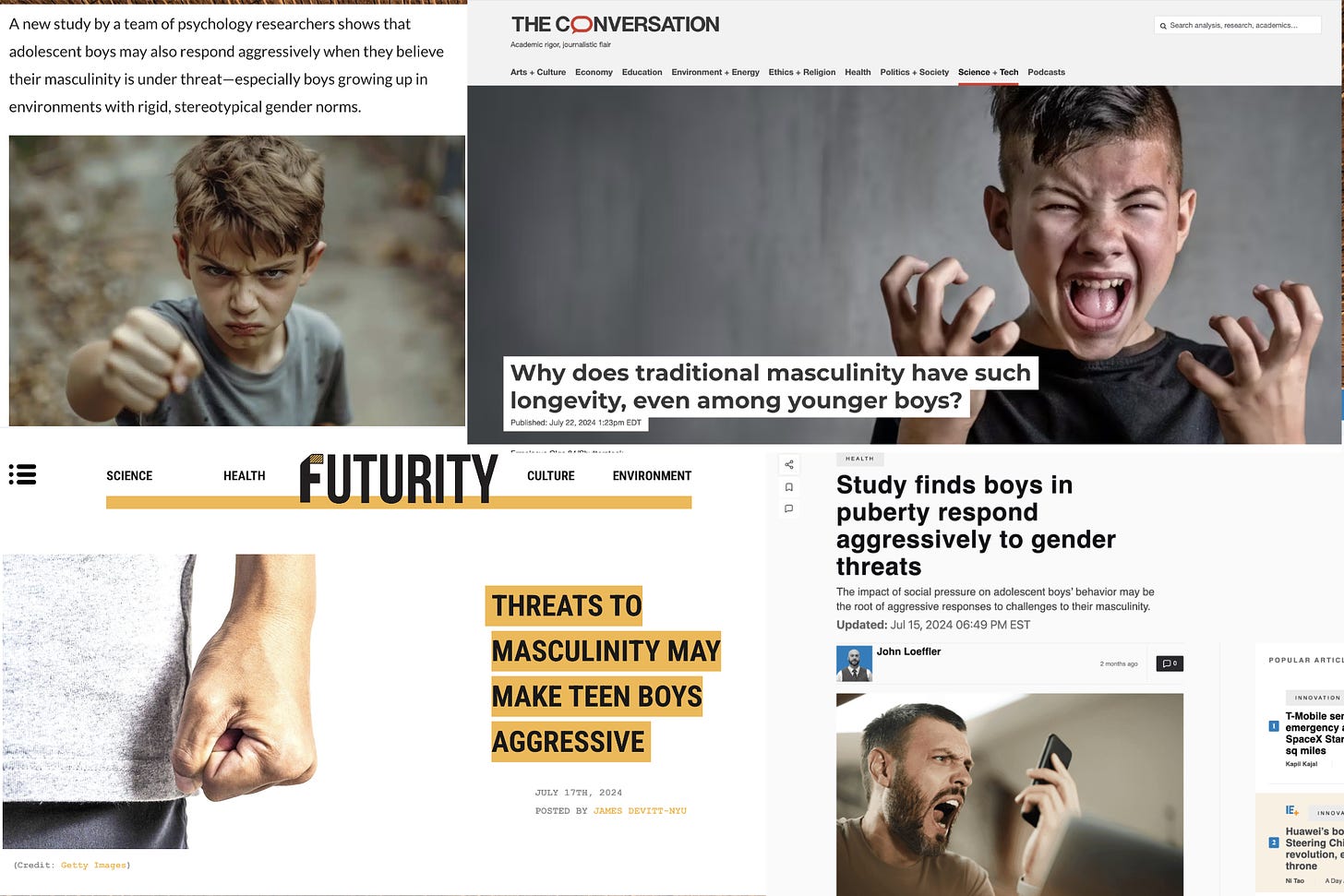
Here's a quote that appeared in many of the articles: “Beyond just aggression, manhood threats are associated with a wide variety of negative, antisocial behaviors, such as sexism, homophobia, political bigotry, and even anti-environmentalism,” said the researcher, Adam Stanaland. Wait, what? How did we jump from threats to status to sexism, homophobia, political bigotry, and even anti-environmentalism? This felt like a massive leap, though it's worth noting the researchers didn’t directly say boys were violent. It seems the media exaggerated that part as seen in the photos, and I doubt the researchers did much to correct it.
Somewhat confused about this, I decided to find the actual study and read it. Testosterone was mentioned—once—in the limitations section, suggesting that future studies could explore its role. This made no sense, given that existing research clearly links testosterone to threat vigilance and status defense. This puzzled me and I was determined to find out what was going on so I wrote to the researcher with some questions. He got right back to me and we carried on a conversation. He was a very nice fellow and I do appreciate his initially taking the time to field my questions. The sense I got was that he was interested in pushing the "it's all about socialization" ideas. I looked up his history and his graduate work was done at Duke University and he was a member of the Duke "Identity and Diversity Lab" for 5 years. The name says it all. I think my assumptions were pretty close. He was likely to follow the ideas that socialization is the most critical element of human development.
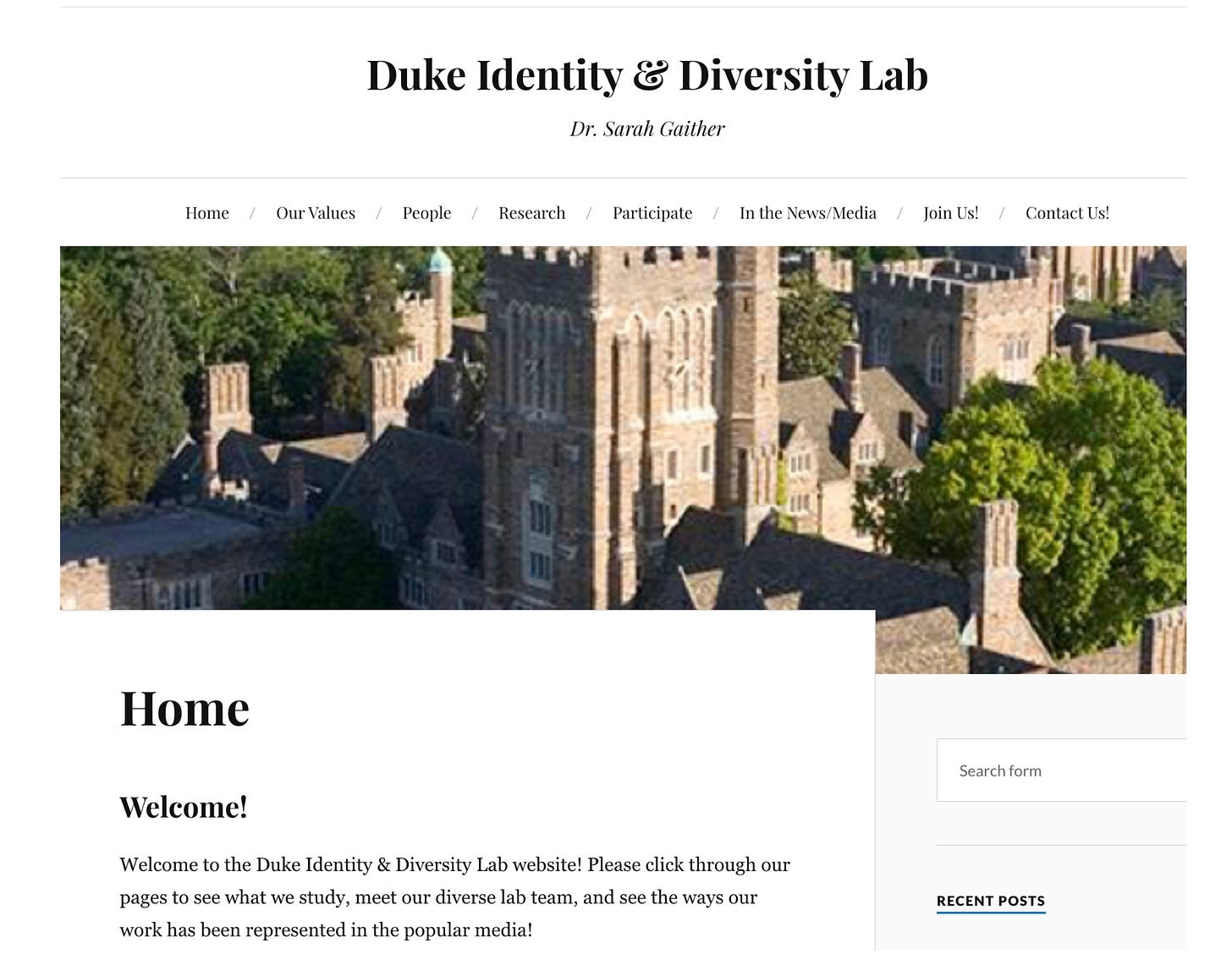
When I asked him, "Isn't threat vigilance related to testosterone levels?" he responded: “Basal testosterone and aggression are certainly related, but here our focus was figuring out whether a social mechanism (i.e., typicality/masculinity threat) could also cause aggression among adolescent boys (as it does among men), as well as when/why.”
In other words, he didn’t answer the question. He acknowledged the biological link but chose to focus only on the social aspect. To me, this is like studying a car engine but only looking at the spark plug and ignoring fuel, air, and combustion. A well-rounded study would acknowledge that both testosterone (biological) and socialization play important roles. Omitting one side feels like an intentional way to push a narrative.
I asked the researcher again if he was aware of studies showing testosterone’s role in threat vigilance, and he responded: “Yes, I’m familiar with the complex role between testosterone, threat vigilance, status-seeking, and aggression. My previous explanation was all to say that there is definitely a biological component to aggression, but our results provide evidence that there is also a notable social component.”
Basically, he’s saying, "Yes, testosterone matters, but we’re focusing on the social side." And that’s how narratives are built, by telling only a part of the story. Unfortunately, this study—like many others—implies that boys could be “fixed” if only they were taught to be less aggressive when their masculinity is threatened. But this ignores the biological factor. Once boys hit puberty, higher testosterone levels biologically predispose them to defend their status. Yet, this crucial piece of information is left out of the conversation.
Puberty
The study focused on 10-14 year old males from pre-puberty through mid- and late-puberty stages. The researchers made several statements that highlighted their views on puberty, including this one:
"We contend that puberty represents a developmental shift in boys' psychological relationship with societal definitions of their gender."
The researchers acknowledged that puberty is an important factor in these behaviors, but what does puberty primarily signal? It highlights the increase in testosterone levels in young males. However, the researchers never mention testosterone. Instead, they describe puberty like this:
"We contend that puberty represents a developmental shift in boys' psychological relationship with societal definitions of their gender. Puberty causes boys to recognize themselves—their bodies, their relationships, and so forth—as being adult-like, which means they must now contend with newly discovered societal expectations of manhood: a precarious status that is earned, can be lost, and is only regained by conforming to rigid norms, such as aggression."
Their interpretation suggests that boys, upon recognizing their maturing bodies, must now face "societal prescriptions about manhood." The focus here is entirely on socialization, asserting that boys must conform to rigid societal norms. There's no mention of testosterone—it's all framed around societal pressures, leaving biological factors out of the discussion entirely.
The Word Completion Test
Another issue I had with this study was their method of measuring aggression: a word completion test. The boys were asked to fill in blanks like "GU_" (which could be "gum" or "gun") and "_UNCH" (which could be "punch" or "lunch"). The number of aggressive words chosen supposedly indicated their level of aggression. I find it hard to believe this test accurately measures aggression, but the researcher assured me it had been validated in other studies. It seems to me that they are taking a cognitive response and then expecting that cognition to predict an actual behavior. Seems wonky to me. I was fairly new to the word completion tests and poked around a bit and found that there is considerable controversy about this. As there should be.
I continue to think this is a very weak indicator but the study got magazines to print pics like this based on choosing gun rather than gum:


These pictures, like the other pictures in this post, imply not only aggressiveness but hostility. Seems like a jump to me. There is a big difference between aggressively defending your status, which is what threat vigilance does, and overt hostility or violence. Looks like they are trying to imply the later. But this is what the media wants. Give them some research that shows the men and boys are aggressive and they will put violence on the front page. Whatever happened to the word assertive which is similar to aggressive? I think assertive might be a better word for men defending their status. Their defense in some cases might get aggressive but the norm might be simply responding to the challenge in a strong, rational, and assertive manner.
The Sample
The sample used in the study also raised some questions. Nearly 90% of the parents involved were mothers, and more than two-thirds were single parents. This is far above the national average for single-parent households, which hovers around 20-25%. Research shows that boys raised by single mothers are more likely to exhibit aggression, yet the study doesn’t address how this may have influenced the findings.
"Regarding the parents themselves, 87.4% identified as women (mothers) and 12.6% were men (fathers). Most parents were the sole primary caretaker of the participant (68.6%) or shared caretaking responsibilities equally with another person (30.0%)."
I asked the researcher about the chances of a biased sample due to the large number of single mothers and here is what he said:
"I’m not sure that it’s fair to say that our sample comprising a majority of mothers is "strong indication that [we] had a biased sample.” Research has shown that although dads are more involved now in their child’s caregiving than they used to be, moms are still vastly overrepresented (hyperlink) as the child’s primary caretaker. It makes sense, then, that our sample would comprise more mothers than fathers—i.e., it’s representative and not biased (in fact, a sample with half mothers and half fathers would be biased against the reality of parenting in the U.S.)."
Maybe so, but he doesn't address the over-abundance of single mothers in the sample and how that is far from the norm for parenthood in the US today. I specifically pointed out the single mothers issue and he simply avoided it and focused on mothers doing the majority of child care. The link he provided was not about single mothers, it seemed to be about two parent families. If he had 87% mothers in his sample and they were all from two parent families, then that would be a different story. But that was not the case. It was 87% mothers and 2/3rds single parents. This tells us that it is likely most of those mothers were single parents. A predominance of single mothers should be a red flag, but not in his view. Could the excess of single mothers have had an impact on the findings? I do wonder.
Framing Parents as the Problem
One key takeaway from the study was that boys from conservative, less wealthy families with parents teaching “hegemonic masculinity” were more aggressive in response to the threat. The tool used to assess this was the Male Role Norms Inventory, which includes statements like these:
Men should know how to fix cars.
Men should be physically tough.
It would be awful if a man enjoyed dressing like a woman.
A man should be able to fix most things around the house.
A man should always be the boss.
Men should lead their household.
A man should always be ready for sex.
If the parents score high on this questionnaire they are assumed to be teaching their boys to be "hegemonic". Hegemonic is seen as something bad. It's meant to say that men are controlling and dominant. It comes from the writing of R. Connell who some time ago became a transwoman. Many academics seem to find Conell's book as the essential word in Masculinities. The parts I have read seem highly anti-male. Connell's book brought a great deal of change into the research on men where many of his ideas were unceremoniously and artificially planted into studies like in the Conformity to Masculine Norms Inventory (CMNI). I did a report on the CMNI and the very suspect manner that it was developed with a focus on how Connell's ideas magically appeared. You can see that one here.
The researchers seemed to focus on the parental pressure (hegemonic attitudes) as being a prime motivator for the boy's aggressive responses. They titled that variable pressured motivation (PM). When reading the media articles it seemed that this parental pressure was being portrayed as being a large part of the reasons for the aggressive responses. This would lend credence to the idea that boys could be fixed if parents would just stop teaching them to be hegemonic males. But wait a minute. The PM variable (parental pressure) when paired with the threat variable (the word completion test) only had a significance score of p=.835. Usually a score of .05 or below is considered to be significant so this one was far off the mark. But they also had a variable that indicated the Degree of Puberty for the Boys (PDS) which showed that the only boys to appear aggressive in response to the word completion were boys who were in mid to late puberty. When that PDS variable was paired with the threat variable (the word completion test) it came up with a score of p=.095. Still not considered significant but surely more significant than the parental pressure variable. When both the PM and the PDS were paired with the threat variable, voila! They get a significance of <.001.
Simply put, the data suggest that puberty (and its associated changes) has a stronger influence on the boys' aggression than social pressure alone. This reinforces the idea that biological factors, like testosterone, may be important drivers for these aggressive responses, even if the study didn’t say so directly.
If puberty is so closely linked to aggression, and testosterone is one of the primary hormones behind puberty, doesn’t it stand to reason that testosterone might be a key factor? The fact that the puberty variable shows a stronger effect than pressured motivation only strengthens the argument that the biological side of adolescence is critical here.
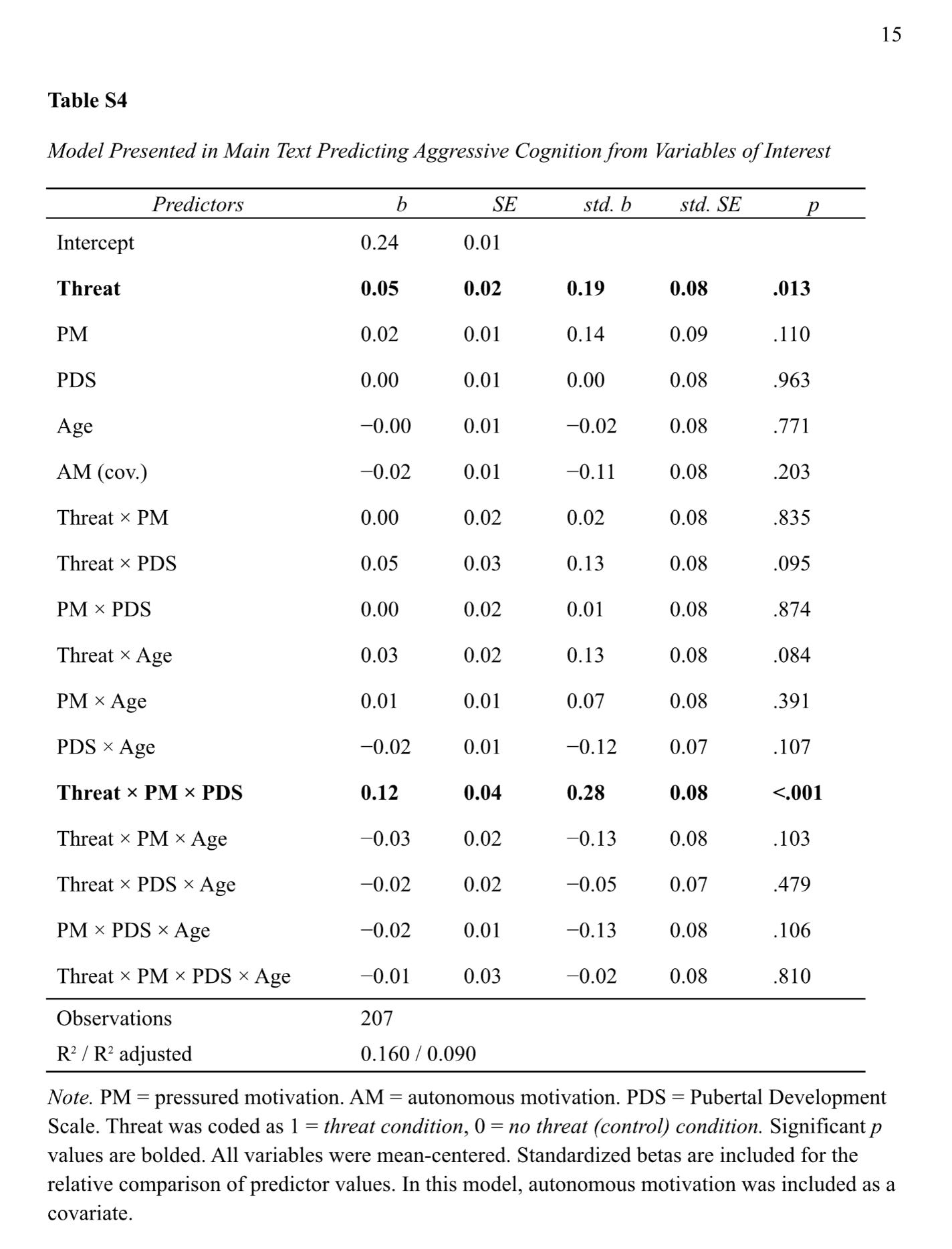
One does tend to wonder if defending one’s status as a male is such a bad thing as it is being portrayed in this research. There are some good reasons for it. Men are reinforced and rewarded for independence and for their ability to protect. Being seen as independent and able to protect is a part of the male hierarchy. But in a highly gynocentric atmosphere these once highly valued traits are framed in a negative manner. If you think about it, maybe the boys who failed to defend their status are actually the ones who need help?
Conclusion
In the end, I never got answers to all my questions. It’s been a month and a half since the researcher stopped responding, but I’m left thinking this study was designed to push a particular narrative, one that minimizes biological factors and highlights social ones. This leaves people pushed towards the narrative that boys can be fixed (and be more like the girls) if only the parents and the culture would stop teaching them to be aggressive.
It’s true that research often focuses on a specific, narrow aspect of psychology. I’ve read many studies that follow this pattern. However, in those studies, there was always a section that reviewed previous research on the topic and acknowledged earlier work in the field. This study, unfortunately, did not do that at all.
But there’s something important that can be gleaned from this study that even the researchers missed: pre-puberty boys didn’t respond aggressively to threats to their masculinity. This strongly suggests that puberty—and by extension, testosterone—is key to understanding these behaviors. Yet testosterone was never discussed in any meaningful way.
Just as an engine needs both a spark and fuel to run, adolescent boys’ aggressive responses to threats to their masculinity likely involve both social triggers and biological factors like testosterone. By including both in the analysis, we can move beyond a one-dimensional explanation and start to understand the complex interplay of factors that drive behavior during this critical period of development.
In the end, it’s not just about what makes the engine run — it’s about understanding all the components that come together to make it work smoothly. And when it comes to adolescence, testosterone is a big part of that equation.
Men Are Good


